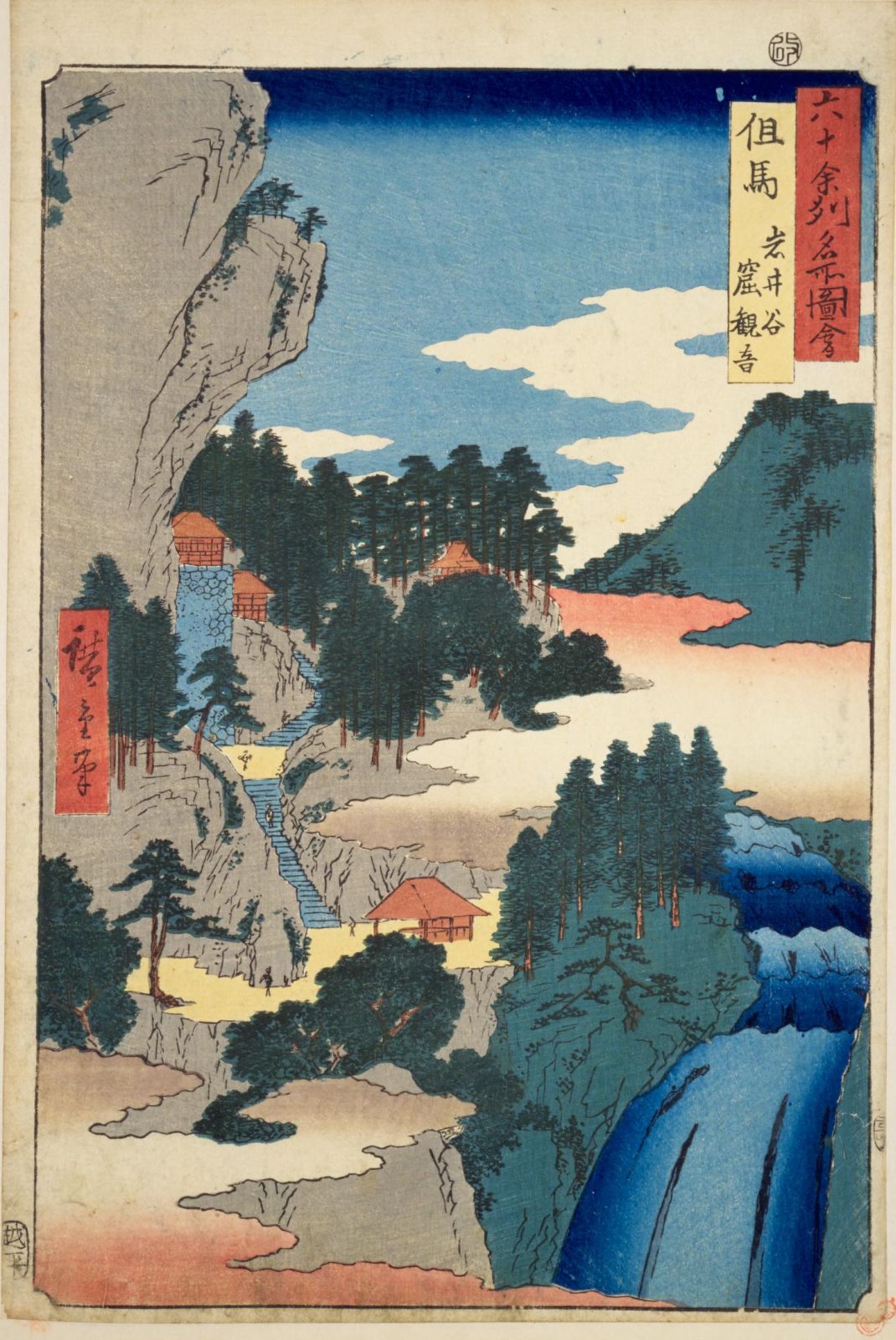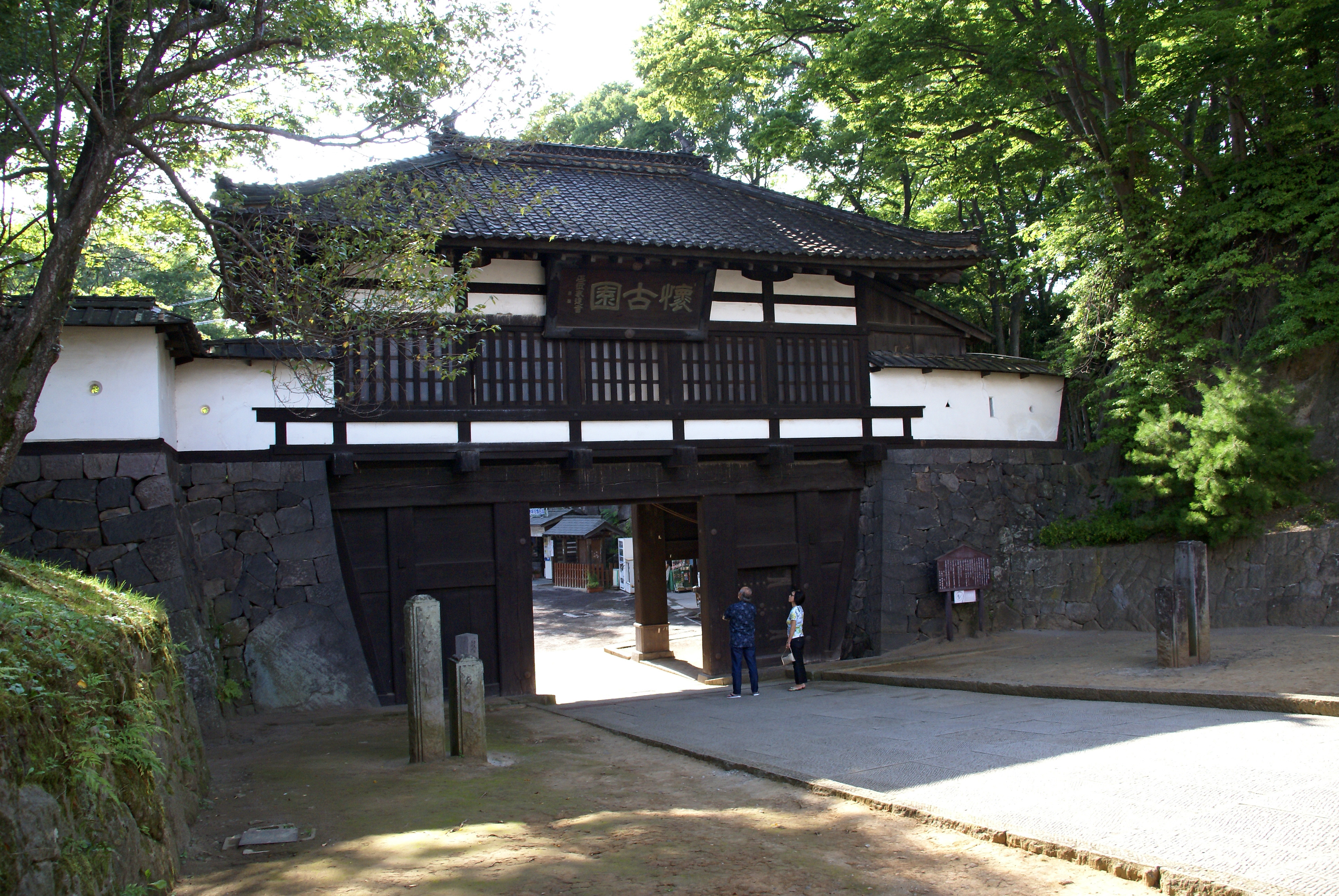|
Ueda Domain
Ueda Castle, administrative centre of Ueda Domain was a feudal domain under the Tokugawa shogunate of Edo period Japan. It is located in Shinano Province, Honshū. The domain was centered at Ueda Castle, located in what is now part of the city of Ueda in Nagano Prefecture."Shinano Province" at JapaneseCastleExplorer.com retrieved 2013-6-25. History The Sanada clan had ruled Chiisagata District in Shinano Province during the |
Han System
( ja, 藩, "domain") is a Japanese historical term for the estate of a daimyo in the Edo period (1603–1868) and early Meiji period (1868–1912). Nussbaum, Louis-Frédéric. (2005)"Han"in ''Japan Encyclopedia'', p. 283. or (daimyo domain) served as a system of ''de facto'' administrative divisions of Japan alongside the ''de jure'' provinces until they were abolished in the 1870s. History Pre-Edo period The concept of originated as the personal estates of prominent warriors after the rise of the Kamakura Shogunate in 1185, which also saw the rise of feudalism and the samurai noble warrior class in Japan. This situation existed for 400 years during the Kamakura Shogunate (1185–1333), the brief Kenmu Restoration (1333–1336), and the Ashikaga Shogunate (1336–1573). became increasingly important as ''de facto'' administrative divisions as subsequent Shoguns stripped the Imperial provinces () and their officials of their legal powers. Edo period Toyotomi Hideyoshi ... [...More Info...] [...Related Items...] OR: [Wikipedia] [Google] [Baidu] |
Tokugawa Clan
The is a Japanese dynasty that was formerly a powerful '' daimyō'' family. They nominally descended from Emperor Seiwa (850–880) and were a branch of the Minamoto clan (Seiwa Genji) through the Matsudaira clan. The early history of this clan remains a mystery. Members of the clan ruled Japan as '' shōguns'' during the Edo Period from 1603 to 1867. History Minamoto no Yoshishige (1135–1202), grandson of Minamoto no Yoshiie (1041–1108), was the first to take the name of Nitta. He sided with his cousin Minamoto no Yoritomo against the Taira clan (1180) and accompanied him to Kamakura. Nitta Yoshisue, 4th son of Yoshishige, settled at Tokugawa (Kozuke province) and took the name of that place. Their provincial history book did not mention Minamoto clan or Nitta clan. The nominal originator of the Matsudaira clan was reportedly Matsudaira Chikauji, who was originally a poor Buddhist monk. He reportedly descended from Nitta Yoshisue in the 8th generation and witnesse ... [...More Info...] [...Related Items...] OR: [Wikipedia] [Google] [Baidu] |
Tokugawa Ieshige
Tokugawa Ieshige; 徳川 家重 (January 28, 1712 – July 13, 1761) was the ninth '' shōgun'' of the Tokugawa shogunate of Japan. The first son of Tokugawa Yoshimune, his mother was the daughter of Ōkubo Tadanao, known as Osuma no kata. His mother died in 1713 when he was only 2 years old, so he was raised by Yoshimune's concubine, Okon no Kata; Okon later gave birth to Tokugawa Munetake, so he was raised by another of Yoshimune's concubines, Okume no Kata, as her biological son. His childhood name was Nagatomi-maru (長福丸). He underwent the '' genpuku'' coming-of-age ceremony in 1725. His first wife, Nami-no-miya, was the daughter of Prince Fushimi-no-miya Kuninaga (伏見宮 邦永親王). In 1733, Nami-no-Miya Masuko had a miscarriage and died. His second wife, Okō, was the daughter of one of the courtiers who had followed his first wife from the Imperial Court to the Shogunal Court in Edo. This famously good-natured second wife was the mother of Ieharu, who w ... [...More Info...] [...Related Items...] OR: [Wikipedia] [Google] [Baidu] |
Matsudaira Tadachika
was a Japanese ''fudai daimyō'' of the Edo period. He was highly influential in the Tokugawa shogunate under Shōgun Ieshige.Screech, Timon. (2006). ''Secret Memoirs of the Shoguns: Isaac Titsingh and Japan, 1779–1822'', p. 241 n74. Tadachika served as Kyoto ''shoshidai'' from 1717 through 1724. He was promoted to ''rōjū'' in 1724 when he moved from Kyoto to Edo.Screech, p. 241 n. 76. Notes References * Screech, Timon. (2006). ''Secret Memoirs of the Shoguns: Isaac Titsingh and Japan, 1779–1822''. London: RoutledgeCurzon Routledge () is a British multinational publisher. It was founded in 1836 by George Routledge, and specialises in providing academic books, journals and online resources in the fields of the humanities, behavioural science, education, law, and .... Fudai daimyo Officials of the Tokugawa shogunate Kyoto Shoshidai Rōjū 1661 births 1728 deaths Fujii-Matsudaira clan {{daimyo-stub ... [...More Info...] [...Related Items...] OR: [Wikipedia] [Google] [Baidu] |
Tajima Province
was a province of Japan in the area of northern Hyōgo Prefecture. Tajima bordered on Tango and Tanba to the east, Harima to the south, and Inaba to the west. Its abbreviated form name was . In terms of the Gokishichidō system, Tajimao was one of the provinces of the San'indō circuit. Under the ''Engishiki'' classification system, Tajima was ranked as one of the "superior countries" (上国) in terms of importance, and one of the "near countries" (近国) in terms of distance from the capital. The provincial capital was located in what is now the city of Toyooka. The ''ichinomiya'' of the province is the Izushi Shrine also located in Toyooka. The area of the province was 2099.01 square kilometers. History Early history The early history of the Tajima region is uncertain. There appear to have been two power centers. The Tajima ''Kuni no miyatsuko'' ruled in eastern Tajima (present-day Asago District and Yabu District) and are mentioned in the '' Kujiki''. They tenuousl ... [...More Info...] [...Related Items...] OR: [Wikipedia] [Google] [Baidu] |
Izushi Domain
was a feudal domain under the Tokugawa shogunate of Edo period Japan, located in Tajima Province in what is now the northern portion of modern-day Hyōgo Prefecture. It was centered initially around Izushi Castle in what is now the Izushi neighborhood of the city of Toyooka, Hyōgo. History From the Muromachi period, Tajima Province had been under the control of the Yamana clan. However, in the Sengoku period, the area was conquered by Oda Nobunaga. During the Battle of Sekigahara, Koide Yoshimasa and his father Koide Hidemasa attacked Tanabe Castle which was under the control Hosokawa Fujitaka during the Siege of Tanabe. Despite being on the losing side of the war, Tokugawa Ieyasu forgave the Koide clan as Hidemasa's second son, Koide Hideie, served in the Eastern Army with a force of 300 cavalrymen at his father's behest, and distinguished himself greatly against the Uesugi clan and at the Battle Sekigahara. Koide Hidemasa was made ''daimyō'' of Kishiwada Domain with a '' ... [...More Info...] [...Related Items...] OR: [Wikipedia] [Google] [Baidu] |
Komoro Domain
was a feudal domain under the Tokugawa shogunate of Edo period Japan. It is located in Shinano Province, Honshū. The domain was centered at Komoro Castle, located in what is now part of the city of Komoro in Nagano Prefecture."Shinano Province" at JapaneseCastleExplorer.com retrieved 2013-5-13. History The area which later became Komoro Domain was repeated contested between the Uesugi clan, the Takeda clan and the Later Hōjō clan during the[...More Info...] [...Related Items...] OR: [Wikipedia] [Google] [Baidu] |
Matsushiro Domain
300px, Matsushiro Castle Part of the Matsushiro domain's Edo estate, relocated to Kamakura and used as a hall at Ryuko-ji Temple was a feudal domain under the Tokugawa shogunate of Edo period Japan. It is located in Shinano Province, Honshū. The domain was centered at Matsushiro Castle, located in what is now part of the city of Nagano in Nagano Prefecture."Shinano Province" at JapaneseCastleExplorer.com retrieved 2013-6-25. History Kawanakajima in northern Shinano Province was the site of numerous battles in the |
Koku
The is a Chinese-based Japanese unit of volume. 1 koku is equivalent to 10 or approximately , or about . It converts, in turn, to 100 shō and 1000 gō. One ''gō'' is the volume of the "rice cup", the plastic measuring cup that is supplied with commercial Japanese rice cookers. The ''koku'' in Japan was typically used as a dry measure. The amount of rice production measured in ''koku'' was the metric by which the magnitude of a feudal domain ('' han'') was evaluated. A feudal lord was only considered '' daimyō'' class when his domain amounted to at least 10,000 ''koku''. As a rule of thumb, one ''koku'' was considered a sufficient quantity of rice to feed one person for one year. The Chinese equivalent or cognate unit for capacity is the ''shi'' or ''dan'' ( also known as ''hu'' (), now approximately 103 litres but historically about . Chinese equivalent The Chinese ''shi'' or ''dan'' is equal to 10 ''dou'' () " pecks", 100 ''sheng'' () " pints". While the current ... [...More Info...] [...Related Items...] OR: [Wikipedia] [Google] [Baidu] |
Daimyō
were powerful Japanese magnates, feudal lords who, from the 10th century to the early Meiji period in the middle 19th century, ruled most of Japan from their vast, hereditary land holdings. They were subordinate to the shogun and nominally to the emperor and the '' kuge''. In the term, means 'large', and stands for , meaning 'private land'. From the '' shugo'' of the Muromachi period through the Sengoku to the ''daimyo'' of the Edo period, the rank had a long and varied history. The backgrounds of ''daimyo'' also varied considerably; while some ''daimyo'' clans, notably the Mōri, Shimazu and Hosokawa, were cadet branches of the Imperial family or were descended from the ''kuge'', other ''daimyo'' were promoted from the ranks of the samurai, notably during the Edo period. ''Daimyo'' often hired samurai to guard their land, and they paid the samurai in land or food as relatively few could afford to pay samurai in money. The ''daimyo'' era ended soon after the Meiji R ... [...More Info...] [...Related Items...] OR: [Wikipedia] [Google] [Baidu] |
Sanada Nobuyuki
was a Japanese samurai of the Sengoku period. He was the son of ''daimyō'' Sanada Masayuki and the older brother of Sanada Yukimura. Early life He was the first son of Sanada Masayuki and his wife, Kansho-in. His younger brother was Sanada Yukimura. He was married to Komatsuhime (Inahime), Honda Tadakatsu's daughter and adopted daughter of Tokugawa Ieyasu. Two other wives of Nobuyuki were his first wife and cousin Seiin-in, who lost her status to Komatsuhime and Ukyo (a daughter of Tamagawa Hidemasa). At an early age, Nobuyuki's father served under the ''daimyō'' Takeda Shingen and sent Nobuyuki as a hostage to prove the Sanada clan's loyalty to the Takeda clan. After the Takeda clan was destroyed by Oda and Tokugawa army, Nobuyuki fled to Ueda Castle, the stronghold of the Sanada Clan and where his family were. In 1585, Tokugawa Ieyasu attacked Ueda Castle; Nobuyuki fought in Battle of Kami river alongside his father and was victorious. Later, as Masayuki served under T ... [...More Info...] [...Related Items...] OR: [Wikipedia] [Google] [Baidu] |
Battle Of Sekigahara
The Battle of Sekigahara ( Shinjitai: ; Kyūjitai: , Hepburn romanization: ''Sekigahara no Tatakai'') was a decisive battle on October 21, 1600 ( Keichō 5, 15th day of the 9th month) in what is now Gifu prefecture, Japan, at the end of the Sengoku period. This battle was fought by the forces of Tokugawa Ieyasu against a coalition of Toyotomi loyalist clans under Ishida Mitsunari, several of which defected before or during the battle, leading to a Tokugawa victory. The Battle of Sekigahara was the largest battle of Japanese feudal history and is often regarded as the most important. Toyotomi's defeat led to the establishment of the Tokugawa shogunate. Tokugawa Ieyasu took three more years to consolidate his position of power over the Toyotomi clan and the various '' daimyō'', but the Battle of Sekigahara is widely considered to be the unofficial beginning of the Tokugawa shogunate, which ruled Japan for another two and a half centuries until 1868. Background To ... [...More Info...] [...Related Items...] OR: [Wikipedia] [Google] [Baidu] |



